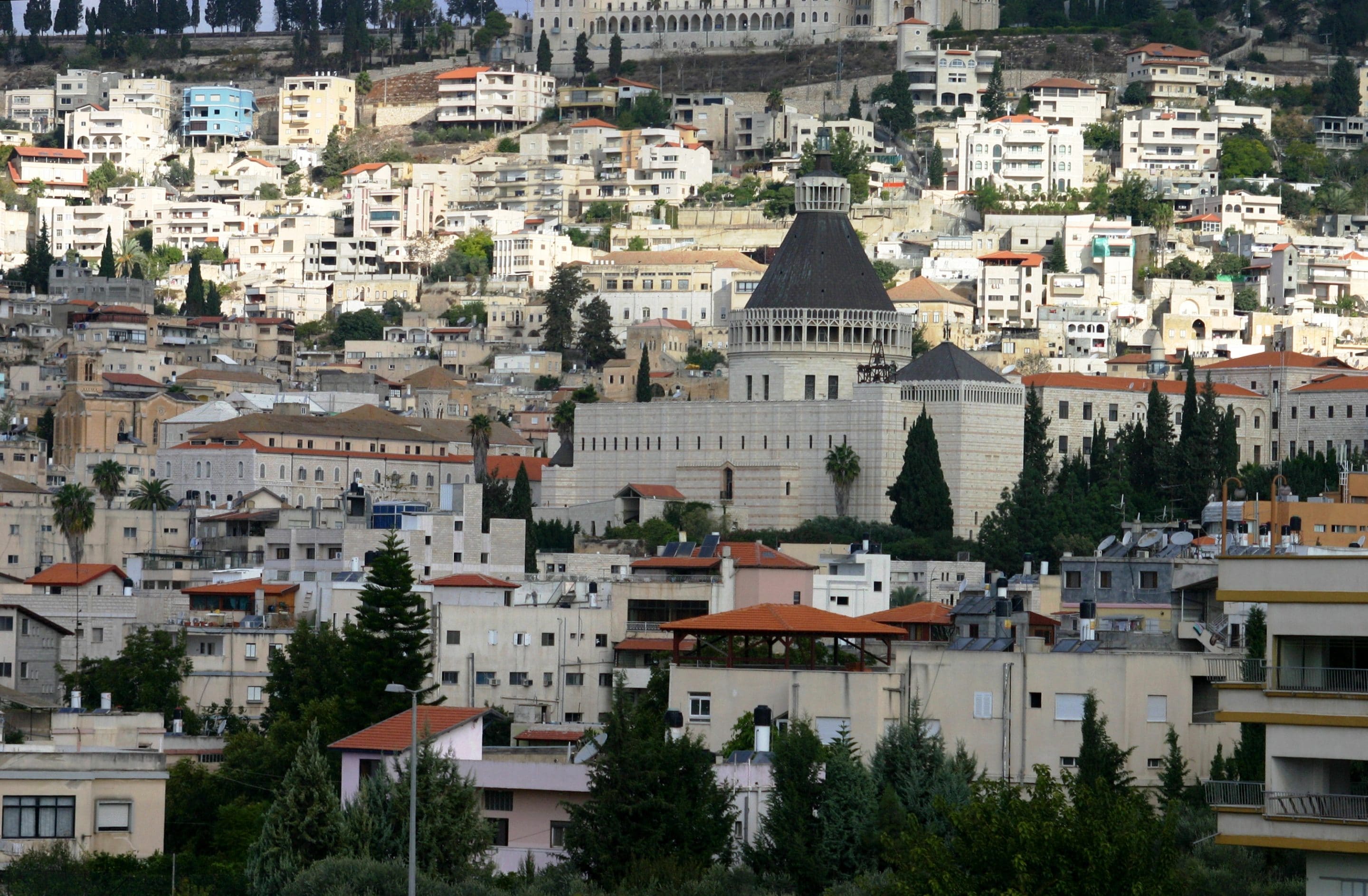
Nazareth: relive the mystery of the Annunciation
Nazareth is one of the biggest Arab cities and Christian communities of Israel. The place where Jesus lived most of his life in secret, his infancy and youth, it’s a landmark that cannot be missed during a trip to the Holy Land.
Historical and modern Nazareth
Today the city counts in Nazareth Illit, or “upper Nazareth”, which is mostly inhabited by Jews. Nazareth is indeed an example of pacific coexistence between different faiths. Here, in the Christian community, there could still live some descendents of Jesus’ brothers and sisters
Every corner of the city centre, the basilica of the Annunciation, the church of Joseph, tunnels and caves integrated in old houses, remember us the times when Jesus walked on the streets of this city.
Where is Nazareth and how distant it is from Jerusalem and Bethlehem
Nazareth is a two hour car ride from Bethlehem and Jerusalem. The modern city and the historic city centre, a fascinating ancient bourgh with its streets, houses and cult places, is in a valley between mountains at 400 meters on the sea level. This is an idyllic corner of the Galilee region known as “pearl of the Galilee”.
One of the most significant sites to see in Nazareth is the basilica of the Annunciation where pilgrims can relieve the miraculous events related to the story of Jesus.
The basilica of the Annunciation
The basilica is a building from the 60s and it’s divided into lower and upper church. The upper part is used for masses for the local community and pilgrims while the lower part is surrounding the Grotto of the Annunciation.
It is here that, two millennia ago, the angel Gabriel showed himself to Mary, promised to Joseph, and announced that she would conceive a son through the intercession of the holy spirit. Here Mary said: “Behold the maidservant of the Lord! Let it be to me according to your word.” (Luke 1:26-38), as the Angelus prayer says.
At the base of a column in the lower church a incision saying “XE MAPIA”, abbreviation of Chire Maria, or “Ave Maria”, was found. It is how the angel greeted the Virgin during the Annunciation.
This important fragment and many other findings coming from the archaeological diggings of the basilica and its surroundings, can be found in the small museum next to the Basilica.
The archaeological site
The basilica was built on a hill rich in ancient ruins of houses, cellars and cisterns with stairs excavated in the rock. These findings can be dated from the Bronze Age to the Roman Era. They testify how the area was inhabited from the biblical times of King David.
The Basilica of the Annunciation is characterized by the presence of the remains of the church of the crusaders, destroyed in 1263 by sultan Baibars and never rebuilt. The modern church stands on these ruins: it truly is a treasure chest with millennia of history and devotion inside.
Lower and Upper church
The facade and the vestibule of the upper church are dedicated to the mystery of Nazareth: on the pediment there is the representation of the Annunciation and on the South wall there are some scenes from the life of Mary, from the immaculate conception to the incoronation to queen of the Heavens.
Observing the exteriors, the pilgrim will feel included in the life of Mary and Joseph, the family of Nazareth that here raised Jesus “in knowledge, age and grace” (Luke 2: 52). Entering in the vestibule, instead, you will be able to observe representations of Mary coming from all over the world, UK and US as well.
The Grotto of the Annunciation
In the lower church the lights are softer and the atmosphere more meditative. You will stand in front of a simple and plain grotto, partially cemented. The grotto was reopened to visitors in 2013 after some huge restorations financed by Pro Terra Sancta. It was used for sure as a house or deposit during the times of Jesus.
This is the Grotto of the Annunciation. Under the altar the words “Verbum caro hic factum est” or “Here the Gospel became flesh” to commemorate the miracle. Here, early in the morning and in the evening, you can pray in silence with the due respect to the sacredness of the place.
Going to the upper church you will be surrounded by the light coming from the colourful glass windows and the dome. The dome has the shape of a lily disclosing its petals. The lily, associated with Mary, is also depicted in the glass widow representing the Annunciation on the facade.
The basilica surroundings
The basilica is surrounded by hostels, lovely shops and restaurants. Staying here is easy: in front of the basilica there is the Casa nova, the franciscan hostel, and the house of the Sisters of Nazareth, offering an accomodation to pilgrims.
Past to Casa Nova Street you will experience the oriental atmosphere of the bazar and get to the Greek Orthodox church, traditionally identified as the synagogue Jesus attended to.
Next to the main street, if you are curious enough, you will find the water spring linked to “Mary’s well”. Here the women of Nazareth, and Mary, came to get fresh water and here, according to the oriental tradition, the angel greeted the Virgin. Behind the well, in fact, there is the Greek orthodox church of the angel Gabriel.
Why you should visit Nazareth
Nazareth offers a beautiful insight on what should have been the life of Jesus’ family, on the places he roamed by as a kid and a young adult. If this is not enough to assess the importance of the site, it’s good to underline how Nazareth is rich in services and comfortable lodging, everything a tourist needs to have an incredible experience in the Holy Land.